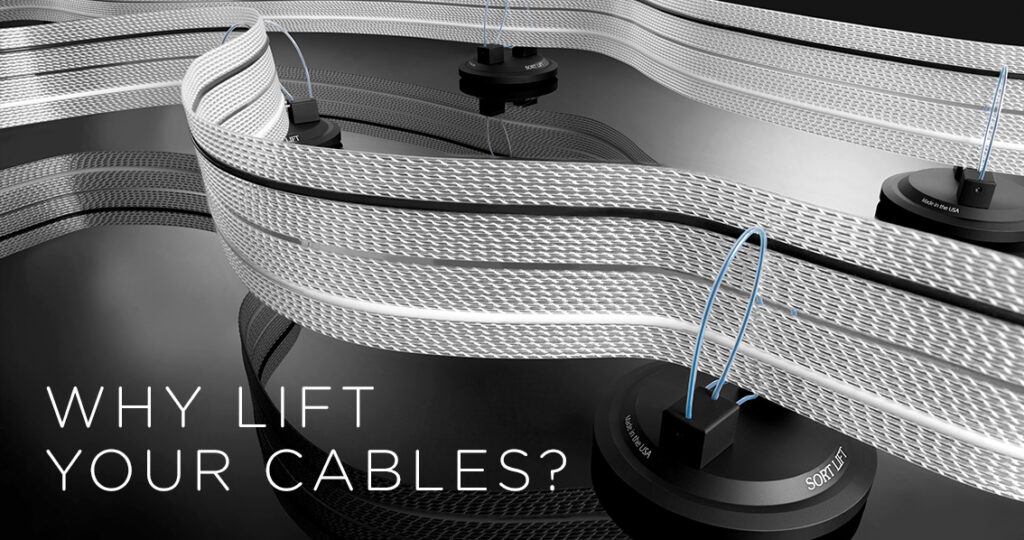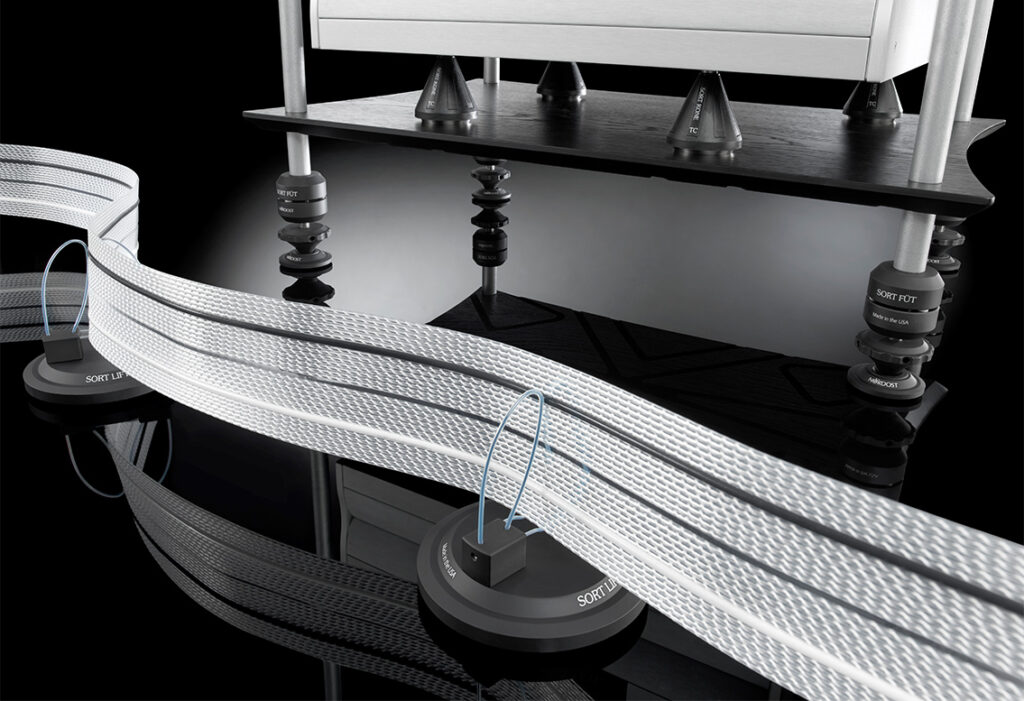
Recently, many of you may have seen systems that use cable lifters. But what purpose do they serve? Are they just aesthetically pleasing? They may highlight the cables, and make them look organized, but do they make a sonic difference?
Sure cables have the potential to create quite a “mess” when just thrown behind the rack, and organization is always a good thing… but there are more to cable lifters than meets the eye.
- Organization: This is the easy one. By utilizing cable lifters you can create organized pathways for cables to follow. The big benefit here is that you can create these pathways so that the cables are sufficiently spaced apart to avoid noise contamination between them. Also, by creating these pathways, you can avoid coiling excess cabling, which actually hurts the performance of the cable by changing its electrical properties.
- Dielectric charge: Another lesser known issue cables face is a buildup of a charge on the dielectric (the cable jacket). The outer jacket can actually store an electrical charge that it can pick up from laying on a floor, especially if they are set on carpet or rugs. Sometimes you can help control the impact of this charge depending on the material from which the cable jacket is made. For example, Nordost uses FEP as our chosen dielectric, which stores less of a charge than other materials (like PVC). The larger the charge on the dielectric, the more the electrical signal traveling beneath it is affected. By lifting the cables off the floor (i.e. stopping the contact between dielectric and an electrically charged surface) you minimize the possibility of building up that charge, lessening any negative effects on the electrical signal.
- Resonance: Cable lifters actually improve the overall sound of the cable itself. This doesn’t work for some cable brands (especially brands that utilize stranded cable designs), but it does benefit the sound of Nordost cables! When you build a cable that is designed to resonate in a specific way, cable lifters can help facilitate that desired resonance. If you look at the Nordost Sort Lifts in particular, you can see that the design is intended to suspend the cable so that movement is possible, allowing the cable to naturally resonate. Whereas, when cable is simply laying on the floor, that contact “deadens” or “compresses” the signal.

